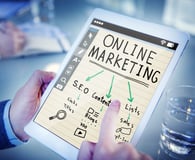Index Content
The development of digital transformation has boosted the activity of e-commerce, and has meant a before and after for those companies whose business model is based on the generation of leads as a starting point to achieve sales. How can this acquisition be achieved organically?
what are leads?
A lead is any user who visits our website and who, at a given moment, decides to provide us with their details on a form, thus losing their anonymous visit status and becoming a contact that can be followed up.
It is a user who visits our website in order to cover a need and decides that he/she wants to receive news about our business, so he/she leaves his/her contact details, in order to continue maintaining a relationship with the company.
how to capture leads?
Lead acquisition is possibly one of the biggest concerns of digital marketers. Good lead acquisition translates into a large number of new contacts for a relatively low investment of resources and time. If we achieve this, we will have a greater chance of meeting the conversion goals and keep the brand growing.
To improve our process of generating leads, we can implement many different techniques and strategies, depending on the brand and its needs. In this post we will teach you how to generate those leads organically with the Inbound Marketing strategy. But first you should know what this strategy is about.
what is Inbound Marketing?
Inbound marketing is a methodology that combines non-intrusive marketing and advertising techniques with the aim of contacting a user at the beginning of their purchase process and accompanying them throughout this journey until the final transaction.
This methodology contacts people who are at the initial moment when they discover your brand. From here, they are accompanied, through the appropriate content for each of the phases, until the final transaction, always in a "friendly" way. And thus achieve loyalty.
Inbound marketing provides advantages to the companies that put it into practice. Among the main ones, there are:
- It increases a company's marketing qualified contacts (MQL).
- It increases a company's registrations (leads).
- Increases the number of visits to the company's website. It takes an average of 198 visits to generate 11 leads and 1 qualified marketing lead.
- Inbound marketing is effective in companies with both B2B and B2C strategies, with B2B companies experiencing a higher conversion from visit to registration and B2C companies experiencing a higher increase in cumulative visits.
Organic lead acquisition
All actions linked to the Inbound Marketing methodology are aimed at capturing leads in a natural way. This type of strategy seeks to combine different channels to attract customers to the brand's website.
Therefore, Inbound Marketing seeks to build a solid base of organic traffic by combining SEO optimisation of the page, through the creation of content marketing together with its dissemination on social networks and lead management through email marketing .
how to convert this organic traffic into leads? In addition to including CTAs that direct to the contact page in blog posts and other relevant URLs, there are three key tactics:
- Newsletter form: this is when a lead becomes a direct contact as they have left their details and wish to receive news from our business. These mailing lists are the first step in building loyalty with the audience that comes to the blog/website.
- Campaigns with downloadable content: each lead capture campaign consists of a landing page, a piece of content that can be a downloadable guide, ebook or catalogue. Promoting this special content will make many leads take the step and fill in the form with their contact details.
- Webinars or onlive events: to participate in these online events, users must also register. Many B2B brands have opted for this methodology to connect with their customer companies.
Once I have these leads, what do I do?
The most important thing is that the leads obtained are qualified, i.e. they are people with a need or interest that makes them require our products or services. In this type of case we have potential as a company or brand because we can be the solution to solve their problem.
To find out if they are qualified, we need to define our buyer persona and learn more about them. To do this, we can not settle for basic data, such as gender or socio-cultural level, we must investigate more specific aspects, for example through surveys to find out their needs and interests:
- Purchasing and behavioural habits.
- Interests, hobbies, desires, wishes.
- Values, ideals, philosophy of life...
The true value of a lead is the possibility of working with it and carrying out actions on it that will help us to qualify it and prepare it for purchase.
I am not sure if my leads are qualified, what can I do? These are achieved with two actions: lead scoring and lead nurturing.
- Lead scoring: with lead scoring we can identify in which phase of the purchase funnel each of our customers is and we will detect those who are more likely to carry out a commercial transaction, a fundamental piece of information, as the sales team can draw up a personalised strategy and offer a commercial offer to the user.
- Lead nurturing: this is a process of sending a chain of emails in a staggered and personalised way, with recommended posts, downloadable content of interest to each user and even personalised offers. The aim is to accompany the user throughout the marketing cycle, while maturing and preparing them for the final stage: the purchase.
With more and more audiences interacting on online channels, brands must adjust their lead acquisition strategies to take advantage of the new possibilities that are emerging thanks to the advancement of digital habits and the main tools.





